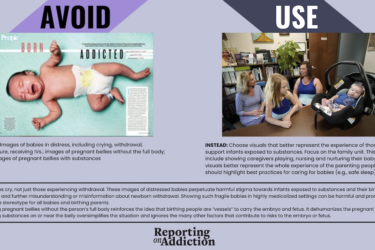
One of the most widespread misconceptions about people with mental illness is that they are more likely to commit crimes than people without mental illness. Several studies have shown that the opposite is true. Overall, most crimes are committed by people who have no mental illness diagnosis; and people with mental illness are more likely to be crime victims than perpetrators.
The misconceptions, policymakers, reformers and researchers in this sphere say, are at least partly driven by news headlines about crimes committed by those with mental illness, especially the severest diseases. Schizophrenia is one of those severe illnesses. And, indeed, those with schizophrenia and related psychotic disorders are the likeliest of all people with mental illness to commit crimes.
That latter reality is at the center of a recently published JAMA Psychiatry study, “Association of schizophrenia spectrum disorders and violence perpetration in adults and adolescents from 15 countries: A systematic review and meta-analysis.” It newly spotlights the complicated, complex problem of crimes perpetrated by mentally ill people, even as it cautions against stigmatizing mental illness.
Study authors contend that the psychiatric needs of people with mental illness at risk for committing crimes go unmet precisely because the medical, law enforcement, and patient advocacy sectors — and the general public — have not confronted the facts. And, they argue, that news coverage of, say, those guilty of mass shootings sometimes has overstated the role/potential role of mental illness in those crimes.
Examining 24 journal-published studies spanning four decades and involving more than 51,000 people with schizophrenia in 15 nations, the meta-analysis concluded, among other things, that:
- People with schizophrenia were at higher relative risks and higher absolute risks of committing a violent act against another person than was the general population.
- Men with schizophrenia were at higher absolute risks than women with schizophrenia for being violent toward others: one in four versus one in 20.
- Risks for committing homicide and sex crimes were higher for people with schizophrenia than people in the general population.
- Those homicide and sex crime risks were particularly higher among younger men with schizophrenia and substance use disorders.
- Absolute rates of violence, across the studies, spanning up to 35 years, ranged from 2.3% to 24.7% in men with schizophrenia spectrum and 0% to 5.4% in women with schizophrenia spectrum disorder.
To contextualize those and other conclusions of their meta-analysis, the researchers wrote that not acknowledging “associations with violence perpetration, in turn, risks leaving clinical needs unmet in psychiatric services. An accurate and balanced understanding of the nuanced association between mental illness and violence perpetration, development of effective prevention, and balanced communication and contextualization of research evidence may be one approach to reducing stigma.”
The investigators continued: “While these results confirm that most people with severe mental illness are not violent, they clearly indicate an increased risk for violent behavior in individuals with schizophrenia. Addressing the potential effects of stigma toward seeking mental health treatment, rather than the stigma of the dangerousness of individuals with these disorders, may have more of an impact on reducing violence risk.”
Conducted by investigators from the University of Limerick School of Medicine in Ireland, University of Oxford Department of Psychiatry in England and Oxford Health National Health Service Foundation Trust, the analysis included studies with a gender breakdown of study participants. Of those participants, 19, 976 were male and 14, 275 were female.
Resources for reporters
- This study by UCLA, Dow University of Health Sciences and the American University of the Caribbean School of Medicine, published in 2021 StatPearls, examined misconceptions regarding crimes committed by mentally ill people and the frequency of crimes committed by them.
- This study by Swedish researchers, published in 2014 in The Lancet, examined more than 82,000 patients and suggested that anti-psychotics and mood stabilizers might lessen violent tendencies among those with severe mental illness.
- This 2021 article from the American Psychological Association explored facts and myths about crimes committed by those with mental illness.
Story ideas
- How does access to health care affect crime risks among those with mental illness and/or substance use disorders, which sometimes co-exist with mental illness? (This study, published in 2018 in the Journal of Urban Economics, explores the link between the lack of addiction clinics and local crimes.)
- What are the challenges to ensuring that those with several mental illnesses get and stay on prescribed medications?
- Locale by locale, where are crime-intervention programs for those with mental illness? This guidance from the federal Agency for Healthcare Research and Quality, which is relatively old (2012) and sites research, addresses some of that.







